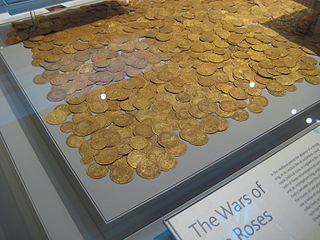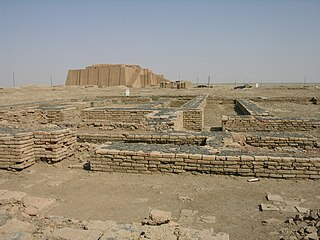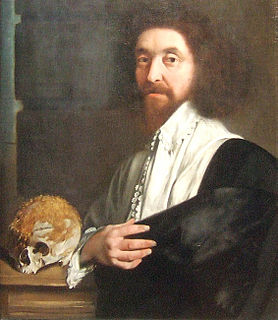 W
WThe Archaeological Museum of Puerto de la Cruz is a small archaeological museum located in the town of Puerto de la Cruz. One of the most important local museums, it offers an archival collection comprising more than 2,600 specimens of the aboriginal Guanche culture, and a document collection named after researcher Luis Diego Cuscoy.
 W
WThe British Museum, in the Bloomsbury area of London, England, is a public institution dedicated to human history, art and culture. Its permanent collection of some eight million works is among the largest and most comprehensive in existence, having been widely collected during the era of the British Empire. It documents the story of human culture from its beginnings to the present. It was the first public national museum in the world.
 W
WThe Department of Ancient Egypt and Sudan is a department forming an historic part of the British Museum, with Its more than 100,000 pieces making it the largest and most comprehensive collection of Egyptian antiquities outside the Egyptian Museum in Cairo.
 W
WThe British Museum Department of Coins and Medals is a department of the British Museum involving the collection, research and exhibition of numismatics, and comprising the largest library of numismatic artefacts in the United Kingdom, including almost one million coins, medals, tokens and other related objects. The collection spans the history of coinage from its origins in the 7th century BC to the present day, and is representative of both Eastern and Western numismatic traditions.
 W
WThe Department of the Middle East, numbering some 330,000 works, forms a significant part of the collections of the British Museum, and the world's largest collection of Mesopotamian antiquities outside Iraq. The collections represent the civilisations of the ancient Near East and its adjacent areas.
 W
WCabinets of curiosities were collections of notable objects. The term cabinet originally described a room rather than a piece of furniture. Modern terminology would categorize the objects included as belonging to natural history, geology, ethnography, archaeology, religious or historical relics, works of art, and antiquities. The classic cabinet of curiosities emerged in the sixteenth century, although more rudimentary collections had existed earlier. In addition to the most famous and best documented cabinets of rulers and aristocrats, members of the merchant class and early practitioners of science in Europe formed collections that were precursors to museums.
 W
WThe Elgin Marbles, also known as the Parthenon Marbles, are a collection of Classical Greek marble sculptures made under the supervision of the architect and sculptor Phidias and his assistants. They were originally part of the temple of the Parthenon and other buildings on the Acropolis of Athens. The collection is now on display in the British Museum, in the purpose-built Duveen Gallery.
 W
WEnnigaldi-Nanna's museum is thought by some historians to be the first museum, although this is speculative. It dates to circa 530 BCE. The curator was Ennigaldi, the daughter of Nabonidus, the last king of the Neo-Babylonian Empire. It was located in the state of Ur, located in the modern-day Dhi Qar Governorate of Iraq, roughly 150 metres (490 ft) southeast of the famous Ziggurat of Ur.
 W
WGlasmuseet Ebeltoft is a museum in Ebeltoft, Denmark. It is dedicated to the exhibition and collection of contemporary glass art worldwide and also offers public demonstrations and seminars to glass students in its glass-blowing studio.
 W
WA glyptotheque is a collection of sculptures. It is part of the name of several museums and art galleries.
 W
WThe History of Science Museum in Broad Street, Oxford, England, holds a leading collection of scientific instruments from Middle Ages to the 19th century. The museum building is also known as the Old Ashmolean Building to distinguish it from the newer Ashmolean Museum building completed in 1894. The museum was built in 1683, and it is the world's oldest surviving purpose-built museum.
 W
WThe Great Library of Alexandria in Alexandria, Egypt, was one of the largest and most significant libraries of the ancient world. The Library was part of a larger research institution called the Mouseion, which was dedicated to the Muses, the nine goddesses of the arts. The idea of a universal library in Alexandria may have been proposed by Demetrius of Phalerum, an exiled Athenian statesman living in Alexandria, to Ptolemy I Soter, who may have established plans for the Library, but the Library itself was probably not built until the reign of his son Ptolemy II Philadelphus. The Library quickly acquired many papyrus scrolls, due largely to the Ptolemaic kings' aggressive and well-funded policies for procuring texts. It is unknown precisely how many such scrolls were housed at any given time, but estimates range from 40,000 to 400,000 at its height.
 W
WThe Musaeum Tradescantianum was the first museum open to the public to be established in England. Located in South Lambeth, London, it comprised a collection of curiosities assembled by John Tradescant the elder and his son in a building called The Ark, and a botanical collection in the grounds of the building. Turret House, the family home, was demolished in 1881 and the estate has been redeveloped; the house stood on the site of the present Tradescant Road and Walberswick Street, off South Lambeth Road.
 W
WThe Museums Association (MA) is a professional membership organisation based in London for museum, gallery and heritage professionals, museums, galleries and heritage organisations, and companies that work in the museum, gallery and heritage sector of the United Kingdom. It also offers international membership.
 W
WA pinacotheca was a picture gallery in either ancient Greece or ancient Rome. The name is specifically used for the building containing pictures which formed the left wing of the Propylaea on the Acropolis at Athens, Greece. The Pinacotheca was located next to the temple of Athena Nike. Though Pausanias speaks of the pictures "which time had not effaced", which seems to point to fresco painting, the fact that there is no trace of preparation for stucco on the walls shows that the paintings were easel pictures. The Romans adopted the term for the room in a private house containing pictures, statues, and other works of art.
 W
WThe Pinakes is a lost bibliographic work composed by Callimachus that is popularly considered to be the first library catalog; its contents were based upon the holdings of the Library of Alexandria during Callimachus' tenure there during the third century BCE.
 W
WThe Pitt Rivers Museum is a museum displaying the archaeological and anthropological collections of the University of Oxford in England. The museum is located to the east of the Oxford University Museum of Natural History, and can only be accessed through that building.
 W
WThe Smithsonian Institution, also known simply as The Smithsonian, is a trust instrumentality of the United States composed as a group of museums and research centers. It was founded on August 10, 1846, "for the increase and diffusion of knowledge". The institution is named after its founding donor, British scientist James Smithson. It was originally organized as the "United States National Museum", but that name ceased to exist as an administrative entity in 1967.
 W
WThe Soviet sale of Hermitage paintings in 1930 and 1931 resulted in the departure of some of the most valuable paintings from the collection of the State Hermitage Museum in Leningrad to Western museums. Several of the paintings had been in the Hermitage Collection since its creation by Empress Catherine the Great. About 250 paintings were sold, including masterpieces by Jan van Eyck, Titian, Rembrandt, Rubens, Raphael, and other important artists. Andrew Mellon donated the twenty-one paintings he purchased from the Hermitage to the United States government in 1937, which became the nucleus of the National Gallery of Art in Washington, D.C.
 W
WThe Musaeum or Mouseion at Alexandria, which included the famous Library of Alexandria, was an institution said to have been founded by Ptolemy I Soter. This original Musaeum was the home of music or poetry, a philosophical school and library such as Plato's Academy, and also a storehouse of texts. It did not have a collection of works of art; rather it was an institution that brought together some of the best scholars of the Hellenistic world, analogous to a modern university. This original Musaeum was the source for the modern usage of the word museum.
 W
WJohn Tradescant the Elder, father of John Tradescant the Younger, was an English naturalist, gardener, collector and traveller. On 18 June 1607 he married Elizabeth Day of Meopham in Kent, England. She had been baptised on 22 August 1586 and was the daughter of Jeames Day, also of Meopham.
 W
WJohn Tradescant the Younger, son of John Tradescant the Elder, was a botanist and gardener. The standard author abbreviation Trad. is applied to species he described.